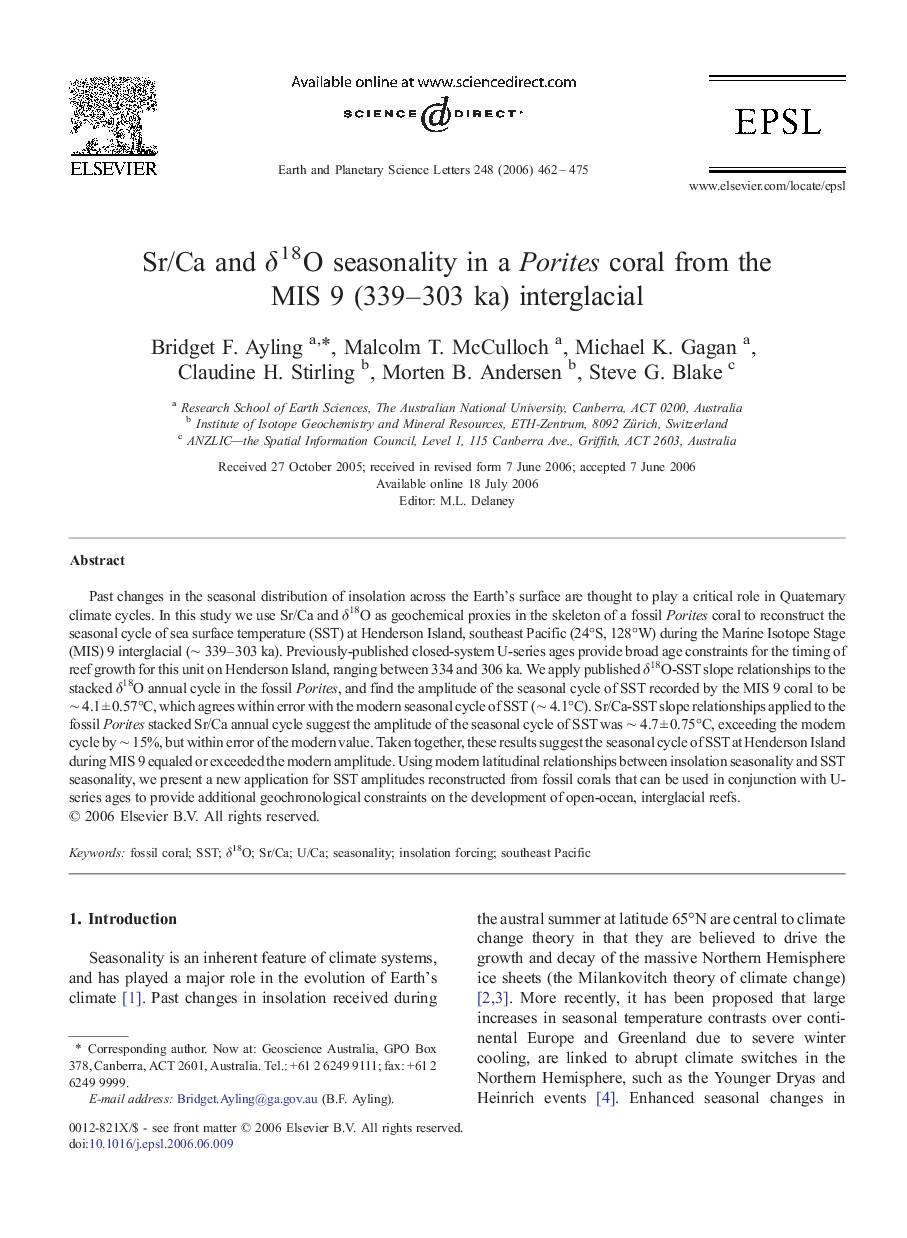| Article ID | Journal | Published Year | Pages | File Type |
|---|---|---|---|---|
| 4680847 | Earth and Planetary Science Letters | 2006 | 14 Pages |
Past changes in the seasonal distribution of insolation across the Earth's surface are thought to play a critical role in Quaternary climate cycles. In this study we use Sr/Ca and δ18O as geochemical proxies in the skeleton of a fossil Porites coral to reconstruct the seasonal cycle of sea surface temperature (SST) at Henderson Island, southeast Pacific (24°S, 128°W) during the Marine Isotope Stage (MIS) 9 interglacial (∼ 339–303 ka). Previously-published closed-system U-series ages provide broad age constraints for the timing of reef growth for this unit on Henderson Island, ranging between 334 and 306 ka. We apply published δ18O-SST slope relationships to the stacked δ18O annual cycle in the fossil Porites, and find the amplitude of the seasonal cycle of SST recorded by the MIS 9 coral to be ∼ 4.1 ± 0.57°C, which agrees within error with the modern seasonal cycle of SST (∼ 4.1°C). Sr/Ca-SST slope relationships applied to the fossil Porites stacked Sr/Ca annual cycle suggest the amplitude of the seasonal cycle of SST was ∼ 4.7 ± 0.75°C, exceeding the modern cycle by ∼ 15%, but within error of the modern value. Taken together, these results suggest the seasonal cycle of SST at Henderson Island during MIS 9 equaled or exceeded the modern amplitude. Using modern latitudinal relationships between insolation seasonality and SST seasonality, we present a new application for SST amplitudes reconstructed from fossil corals that can be used in conjunction with U-series ages to provide additional geochronological constraints on the development of open-ocean, interglacial reefs.
